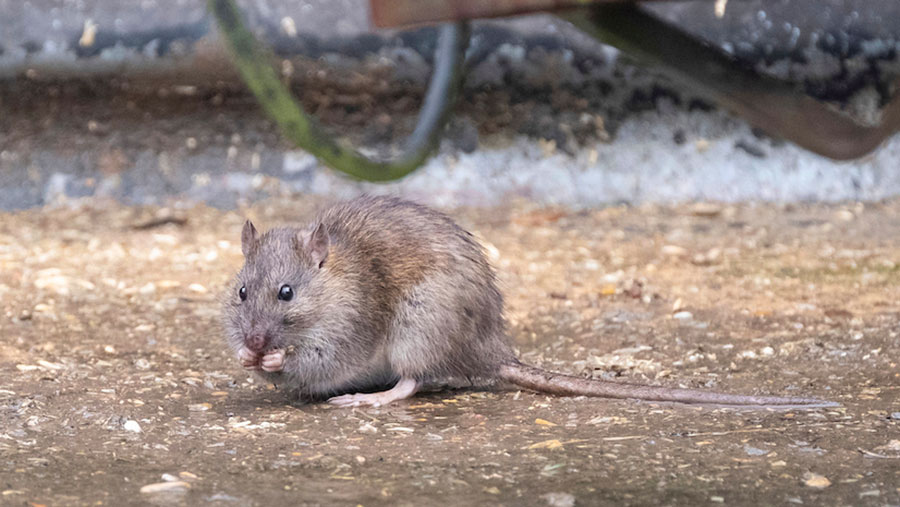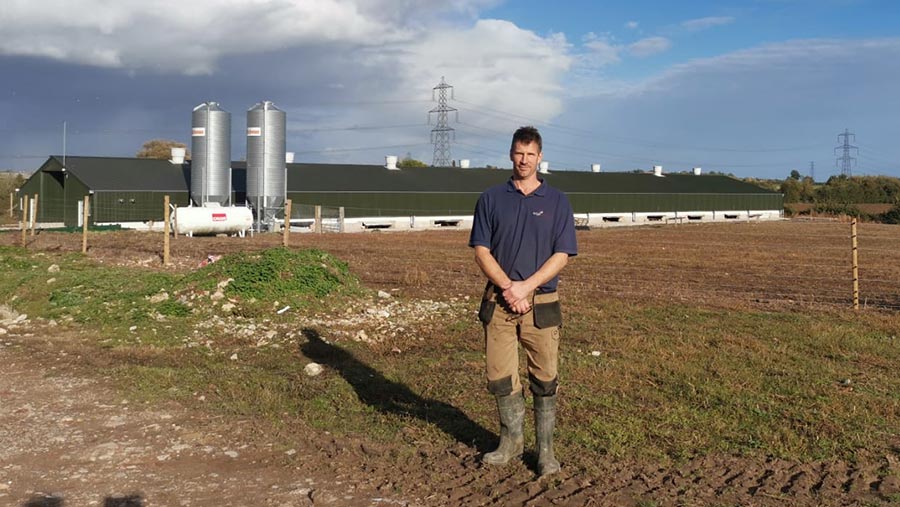Expert advice for preventing vermin issues on poultry farms
 © Tim Scrivener
© Tim Scrivener Vermin can leave a big dent in a poultry farm’s feed conversion figures and the damage they cause to housing and equipment is costly.
As the days get shorter and colder, an infestation is more likely as rats and mice are lured into sheds by warmth, feed and water, bringing disease with them.
The winter also provides greater opportunities for foxes, badgers and stoats to breach defences under the cover of darkness.
See also: How to bait properly to control rodents on poultry farms
Trying to reduce predation is a battle, admits Rebecca Tierney, poultry adviser for Irish research body Teagasc. “Totally rodent-proofing a poultry house is not possible, but you can make it difficult for rodents to gain entry,” she says.
Rodenticides deal with an infestation, but preventing an incursion should be the first line of defence, Ms Tierney says.
Yet on many farms, preventative action is rarely as vigorous as the problem demands. So what are the things farmers can put in place to keep vermin at bay, and what areas should they focus on?
Focus areas
Housing
By gnawing, rats can gain entry through any opening greater than 1.3cm, and mice through any opening larger than 0.6cm.
Wooden structures are at greater risk from the cracks and holes that provide entry points for rodents than modern poultry sheds. Rodents will burrow under walls and, once in, they will chew on just about anything, including wiring, which is an obvious fire hazard.
If repairs are needed, the depopulation gap is the best time to do this, as the noise and activity from this work can upset birds. However, it is important to deal with damage as it is seen.
“Don’t put off repairing damaged cladding – it only takes a single mouse or rat to gain entry and you will quickly have an infestation,” says Ms Tierney.
Feed store checks
- Store feed in covered airtight containers.
- When feed is delivered, ensure the delivery driver has access to the tools needed for sweeping up spills.
- Keep the area around the feed chute openings clean.
- Don’t store empty feed bags or bedding near the shed.
Seal all holes with durable materials that cannot be gnawed by rodents, such as sheet metal, hardware cloth or stainless steel wire wool. Fix 0.6×0.6cm galvanised wire mesh to all ventilation points.
Seal gaps or holes where pipes, electric cables or similar objects enter the shed with rodent-proof materials, as even a small unprotected opening can be an invitation to rodents. All vents and duct openings for heating and air conditioning should be screened with mesh.
Doors should fit tightly – the distance between the bottom of the door and the threshold must not exceed 0.6cm.
Keeping housing tidy is important too, to remove nesting opportunities. “Remove items that don’t belong there and keep strips near walls clear,” Ms Tierney says.
Remove all broken eggs and make sure any material that rodents could use for nesting is placed in rodent-proof storage areas. Staff must promptly report signs of vermin or damage to housing.
As the nights draw in, light and warmth from the popholes is more obvious and attracts vermin. Popholes and any other openings should be closed as early as possible so vermin and predators are not drawn into the building.
Ranges
Maintaining a weed-free, 1m-wide area around the shed discourages burrowing rodents and eliminates a food source and nesting site. This buffer can be maintained with regular mowing or heavy gravel.
Destroy all nests in nearby fields, trees and building bases. If there are potholes on the range, fill them, because any water will stagnate and can then be a magnet for wild birds.
Ms Tierney suggests splitting large ranges into paddocks and rotating the flock to avoid excessive wear and bare patches of soil.
Physical defences
Snap traps
A snap trap is a good tool for controlling small infestations. Traps should be placed at 2-4m intervals.
Fencing
Predator exclusion fences are essential in a free-range system, but foxes are clever creatures capable of breaching even the best barriers.
Ms Tierney says foxes quickly work out how to outsmart defences. “Fences only work if they are well-designed and well-maintained,” she says. Anti-predator fences are either barrier types or electrified, and can be used in combination.
Electric fences
Ms Tierney says one of the best-designed systems is nine strands of high-tensile wire up to a height of 1.25m. Wires should alternate between earth and live and be spaced at intervals ranging from 5cm to 25cm.
The base wire sits 5cm off the ground and is earthed to avoid it touching vegetation – a mulch strip could be placed under the wire when the fence is being erected to stop vegetation earthing the wire.
The strand above the base wire is live and that alternating pattern is repeated to the top wire, which is attached to fence posts at up to 10m apart.
Monitor fence voltage regularly with a good-quality tester – a minimum of 3,000V at all points on the fenceline is recommended to deliver a large enough shock to deter foxes.
The earth system should be a maximum of 400V and tested regularly too. More earth stakes can be added if this needs to be reduced.
A mains-powered energiser is preferable to batteries, which can run flat, leaving defences open. Keep a current running through the fence continually, even when housing the poultry at night.
Barrier fences
Barrier fences are an alternative to electric systems and these need less vegetation control than stranded electric or combination fences.
Also, there are no electric wires to fail, and fences are rigid, making them less prone to damage.
If using this method, bury the fencing to a depth of 50cm, with a further small span kinked at right angles to the height to prevent tunnelling badgers.
Fence design must be a robust galvanised steel, chain-linked construction and maintenance needs to be meticulous for it to be effective.
Case study: Bovone Farm, Gloucester
Simple and inexpensive measures are keeping two poultry sheds at a Gloucester farm vermin-free.
Jon Tydeman grows 22,000 Hubbard JA57 chickens at Bovone Farm for Pembrokeshire-based Capestone Organic Poultry.
One of his sheds, a breeze-block and wooden construction, dates back to 1962, while the other is a more modern, insulated building.

Jon Tydeman © Debbie James
Multiple control measures were put in place to prevent infestation in the poultry sheds and these continue to be effective today.
“We have never been aware of rats eating out of the feeders – we very rarely see vermin,’’ reports Mr Tydeman.
Paddocks are mown to keep grass height below 15cm and vegetation around the sheds is regularly strimmed. Any feed spills are immediately dealt with.
Mr Tydeman walks the sheds three times a day. Although casualties are rare because of the low stocking density, any dead birds are promptly removed and place in a locked 1,000-litre chest freezer to await collection.
“Vermin are drawn to a building by the smell of anything dead, so we make sure there is nothing there to entice them,” says Mr Tydeman. “If there is no temptation, you won’t get rats.”
Among his best weapons in the vermin control programme are feral cats – he feeds these just once a day to maintain their vermin-hunting instincts.
As rats can burrow through concrete, when any new floors are laid, broken glass is added as a deterrent.
Rodenticides are also used – Mr Tydeman is certified to lay bait – but he only does this on an as-needed basis.
“We might use bait for two or three weeks and then leave it for four months,” he says.
